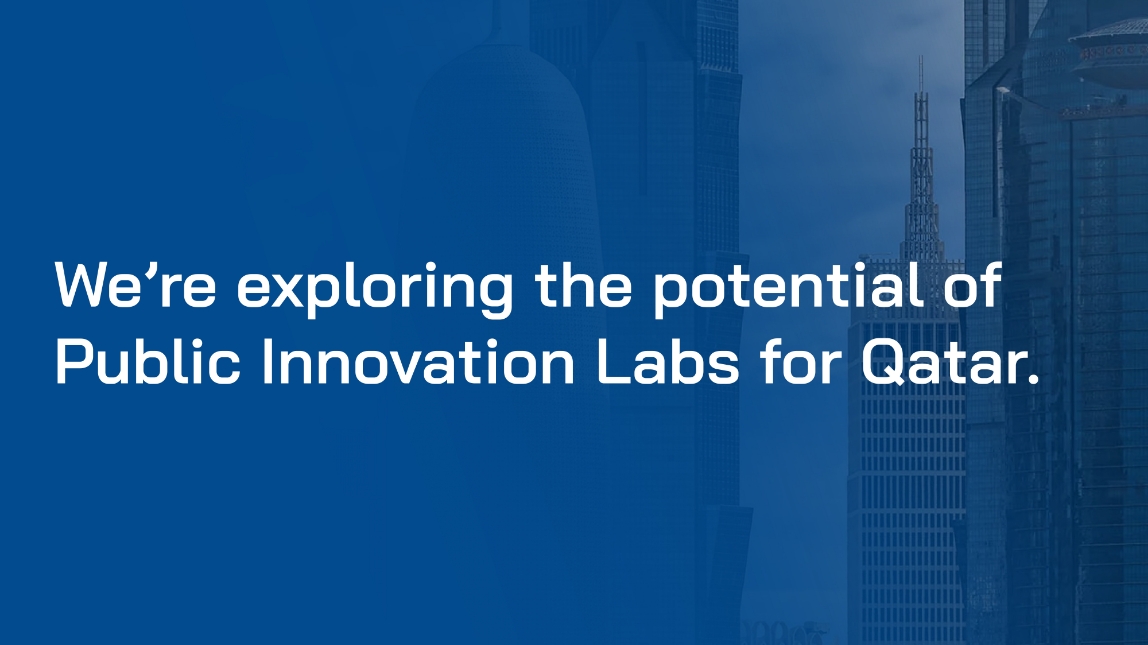
Building Public Sector Capacity: a new approach for Qatar
Qatar’s National Vision 2030 sets a clear course for economic diversification and sustainable development. To achieve its objectives, we require a public sector that is agile, responsive, and equipped to tackle complex challenges — and aligned with the needs of stakeholders including private sector businesses, third sector organisations and individual citizens.
In our latest whitepaper, “Imagining A Public Innovation Lab for Qatar: Methodologies, models and approaches” we propose a solution: the establishment of a Public Innovation Lab (PIL).
We offer an analysis of the different PIL models currently in use around the globe, and the factors to consider when designing and developing a PIL tailored to a Qatari context. To be among the first to receive a copy, join our mailing list.
In this article we introduce the concept of a PIL — and the high-level factors which we believe need to be considered in adapting this model to deliver impact, build efficiency and improve outcomes within Qatar’s government and the wider public sector.
What are Public Innovation Labs?
PILs are specialist units set up and operated within — or in partnership with — government. They are intended to act as catalysts for change — employing cutting-edge methodologies such as design thinking and data analysis to develop and implement innovative solutions to public sector challenges.
PILs go beyond traditional policy development models by focusing on areas such as practical experimentation, citizen engagement, and iterative development. They serve as hubs of creativity, bringing together diverse expertise from within and outside government to generate fresh ideas and drive meaningful improvements in public services — building public sector capacity for effective and impactful innovation.
Global best practice and models for success
A range of different PIL models and approaches are in place internationally, each with its own strengths and weaknesses, and each tailored to its own national context. From coaching models that build internal capacity to more practical innovation labs focused on delivering specific technology-driven solutions, the optimal approach depends on the specific context and goals.
In the white paper, we evaluate the strengths and weaknesses of these different models, providing case studies of successful implementations from around the world — supporting public sector leadership to identify the most effective strategies for establishing a PIL tailored to furthering Qatar’s government objectives and vision.
Building a thriving innovation ecosystem
A successful PIL requires more than just a dedicated unit within government. It needs to be embedded within a broader ecosystem that supports and nurtures innovation. This includes key ingredients such as strong leadership commitment, a culture of experimentation, and effective mechanisms for collaboration and knowledge sharing.
Our white paper explores these essential elements and outlines the key ingredients for creating an environment where innovation can flourish. We offer specific recommendations for establishing a PIL in Qatar — outlining the potential benefits, such as improved public service delivery, enhanced government efficiency, and stronger citizen engagement — and considering factors such as political context, resource availability, and strategic priorities.
A roadmap for transformation
Establishing a PIL is not a quick fix, but a long-term investment in the future of Qatar’s public sector — one which requires careful planning, dedicated resources, and a commitment to continuous improvement.
As the developer of 70% of the innovation spaces in Qatar, Ibtechar is ready to work with government in exploring the possibilities and potential of a public innovation lab — and we hope that our white paper provides an informative starting point for navigating this journey, by offering practical guidance and actionable insights. By carefully considering its recommendations, we believe Qatar can create a PIL that effectively drives innovation and contributes to the realisation of our national vision.